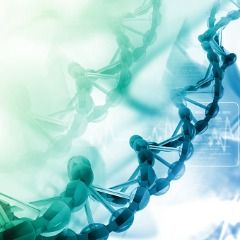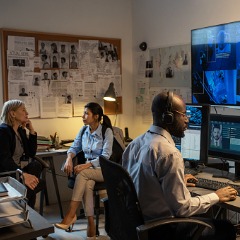 Resources
Resources
At ForensicsColleges, we want to connect students, prospective students, and professionals to the multitude of resources available online in order to stay up-to-date on recent news and trends within the online forensics community. From national news in the industry, cold cases in kidnapping, and top websites for different areas of forensic study, you can always find what you’re looking for here in our resources section.
Further your forensic knowledge and help continue the advancement of forensic research today. For additional information and up-to-date news, follow us on Twitter at @ForensicsEd.

Internship List – 25 Cool Forensic Science Internships (2025)
Many students completing a degree in the forensic sciences, or in the natural sciences, may be required to complete an internship to obtain that degree. Learn more about what these internships entail, and where to find them.

What Can I Do With a Degree in Forensic Psychology?
Forensic psychologists share one goal through research and clinical practices: to understand what motivates people to commit crimes and use this knowledge to prevent future crimes. Forensic psychology work involves studying past crimes, questioning suspects and convicted criminals, and conducting clinical outcomes to become legal evidence. Find out what career options are available to forensic psychology degree holders at both the undergraduate and graduate degree levels.

Discover the fascinating world of forensic engineering, where experts investigate structural failures, medical device incidents, environmental challenges, and more. Learn about the tools, methodologies, and real-world cases shaping this diverse field, featuring insights from seasoned forensic engineer Dr. Matt Baretich.

The Hottest Areas of R&D in Criminal Sciences
Researchers and professionals are exploring innovative approaches to tackle modern challenges, leveraging everything from artificial intelligence and machine learning to biotechnology and digital forensics. These cutting-edge technologies promise to enhance criminal investigations' accuracy, efficiency, and effectiveness, offering new opportunities to solve cases that were once considered impenetrable.

How is DNA Fingerprinting Used to Crack Criminal Cases?
DNA fingerprinting, also known as DNA profiling, emerged in the mid-1980s as a transformative tool in forensic science. The technique was pioneered by Sir Alec Jeffreys, a geneticist at the University of Leicester, who discovered that specific regions of DNA vary greatly among individuals, much like fingerprints.

Forensic Science and Investigation Scholarships (2025)
Taking on debt to fund a college education used to be a direct path to social and financial advancement, but the latest studies show that student debt actually might hinder it. The good news is that help is out there for those who need it, and there are more scholarships available than ever before.

What Qualifications Does a Bloodstain Pattern Analyst Possess?
Bloodstain pattern analysts examine bloodstains at crime scenes in order to determine the events that caused the bloodshed. By analyzing the patterns, shapes, and distribution of bloodstains, they might be able to deduce the type of weapon used, the sequence of actions which took place, and/or the positions or movements of the victim, perpetrator, and any other people involved. This analysis helps in understanding the dynamics of the crime and can provide critical evidence in investigations and court proceedings.

What is CODIS? A Forensics Professional’s Guide
The Combined DNA Index System, commonly known as CODIS, is a tool used by law enforcement agencies to aid in solving crimes. Developed and maintained by the FBI, it is one of the largest DNA databases in the world, containing over 14 million offender profiles and over four million arrestee profiles, along with profiles from crime scenes, missing persons, and unidentified human remains.


